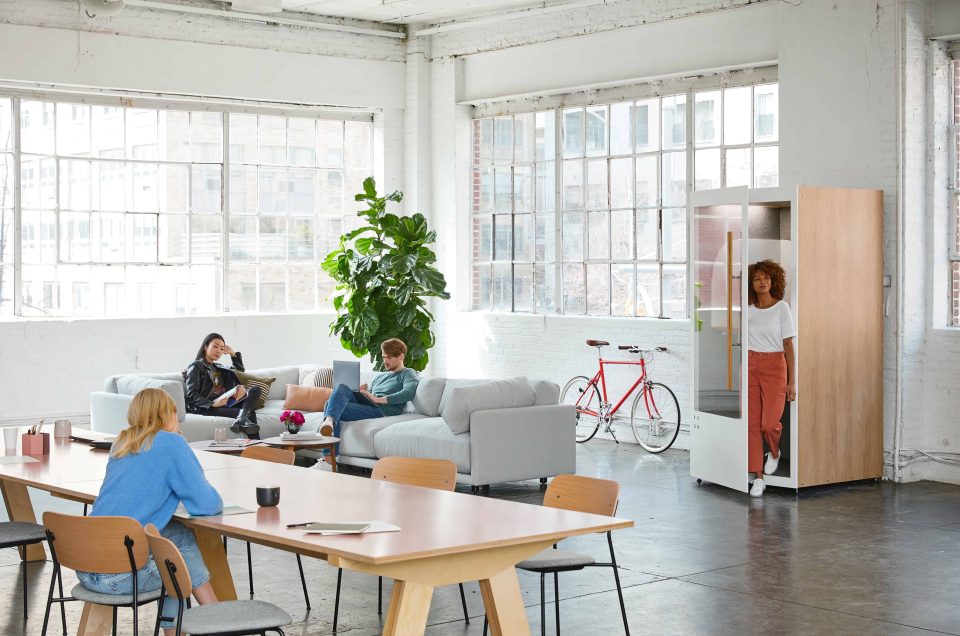The Rise and Rise of Flexible Working

The concept of flexible workspace is surging across the European market, with providers throughout EMEA taking advantage of its growing popularity. Yet the market does remain hugely fragmented with more than 6,000 providers in cities across the region.
While IWG remains the global leader across EMEA, Africa and North America, WeWork is champing at the bit, the most prolific investor in Asia Pacific and Latin America. And they haven’t finished with EMEA by any stretch, having absorbed up to around 600,000 sq m of office space across Europe in little over four years. Their geographic coverage is not as extensive as IWG but their impact has been significant, and in terms of brand presence, is driving greater awareness of the sector.
This explosive growth of serviced offices is predicted to continue. However, levels of supply vary greatly between cities. Despite the column inches dedicated to flexible workspace, it does remain a very small proportion of city office space.
As of end 2018, it accounted for only 1.5% of total office space on average, across the 22 major European cities surveyed, with the highest proportions recorded at 5% in London and Amsterdam.
London and Paris are the most mature markets, with both cities seeing more established operators develop their presence over the last year. Yet, while both cities are dominated by a small number of operators, there are domestic players who are playing a significant role and account for more than 60% of activity.
In Berlin, there is a far greater internationalisation of the market, with other global operators accounting for over 40% of space. In Milan, the reverse is true, with Italian operators running more than 40% of the flexible space.
As the sector evolves and becomes more mature, operators are enhancing their product in line with the increasing demand. New styles, sizes and types of flex solutions are being developed to suit the expanding market.
Sally Carter, Head of Marketing at Leo, highlights how the types and sizes of businesses choosing serviced offices has widened from sub-10 desks to 25-50 desk operators, explaining,
‘This trend has influenced the diversity of our portfolio, both in terms of style and size of space we offer.’
Other providers such as BeSPOKE are also recognising a shift in the types of users, developing their portfolio to accommodate customised requirements, but still with flexible terms. And with a mixed estate of freehold and leasehold building, Managing Director Jonathan Weinbrenn notes ‘It’s encouraging to see how many landlords are keen to partner or work more closely with us.’
So it’s no surprise that the landlords are looking at ways to get in on the action. In London, L&G, now has its own brand Capsule, and there are others including British Land, with Storey.
The established landlords are adapting their offer to be more tenant-focused, and are now offering more service-oriented office space. Many are looking at JV opportunities with established and successful workspace operators.
Enhancing tenant experience by delivering additional amenities to assets is a key feature of these new ventures. Again, this heightened amenity space will encourage the larger corporates to consider how they use flexible workspace, beyond simply as a medium for entering new markets, or for housing an off-site project team.
Multinational corporations are increasingly interested in incorporating flex into their portfolios. Two alternative leasing models are growing in popularity off the back of the changing working environment.
As work becomes more digital and mobile, and as a reaction to the growing need for flexibility and the impact of lease accountancy changes, we are seeing flex and core, and city campus models being used more frequently. And with the changing regulations, all of these buildings are required to provide greater amenity space, making flexible workspace a more attractive to multinationals in the long term.
We are seeing a range of different deal structures being used across EMEA as there is a marked shift by landlords to embrace this new way of working – management agreements between flexible operators and real estate owners, as well as retail and turnover leases.
WeWork’s Head of Transactions, Mary Finnigan explains,
“We have increasing interest from landlords on both a local and global level seeking to partner with us via revenue share and management agreements – there’s an increasing recognition from landlords that we provide best in class building operations as part of our community offering.”
And landlord property companies are recognising the value in partnering with flexible operators.
The industry has of course seen some big acquisitions in the last year from Regus’s acquisition of Basepoint Business Centres in a transaction valued at £100m to London Executive Offices (LEO) being sold for £475 to Asian investors. And with some of the newer flexible workplace operators not having the real estate knowledge, service offering or economies of scale to compete and survive, we can anticipate more change over the next 12 months – the large diversity of operators across Europe suggests definite scope for future consolidation and M&A activity down the line as the market matures.
So as economic growth rates drop globally, and the labour pool continues to tighten, any subsequent market contraction is likely to test the flexible workplace market, which for many newer operators will be for the first time. There’s a strong chance that the (peaks and) troughs of older economic cycles will be smoothed out by the shorter, more customised lease options provided by flexible workspace operators. And with the top two players, global giant IWG and industry climber, WeWork, with collectively just 20% supply of this expanding market, there’s still plenty to play for – with increasing diversity of choice for occupiers, a surge in landlord-led products and the potential for more M&A activity in the near future.
This article was written by Tom Sleigh and is republished from Colliers One.
